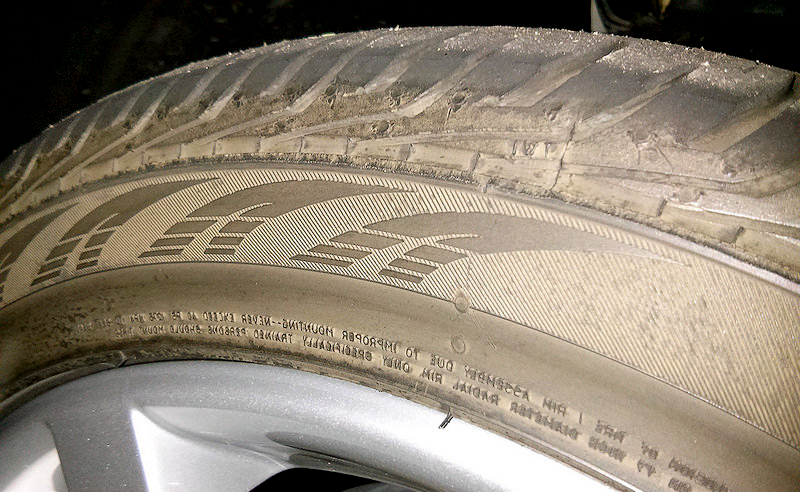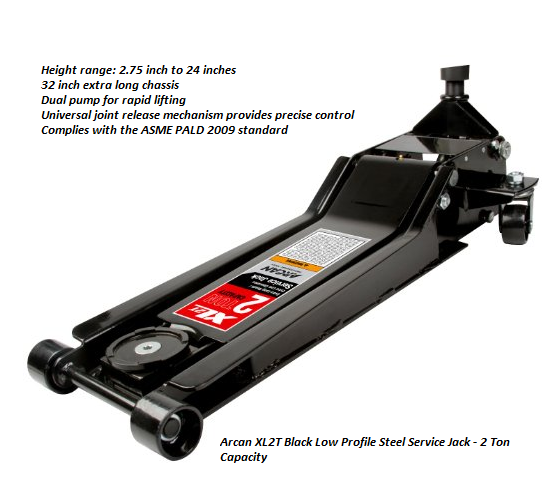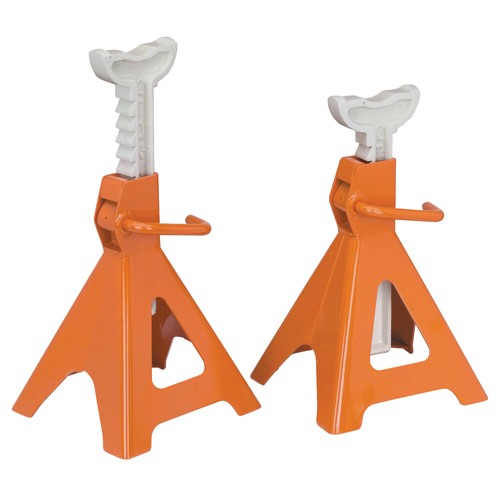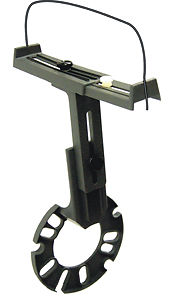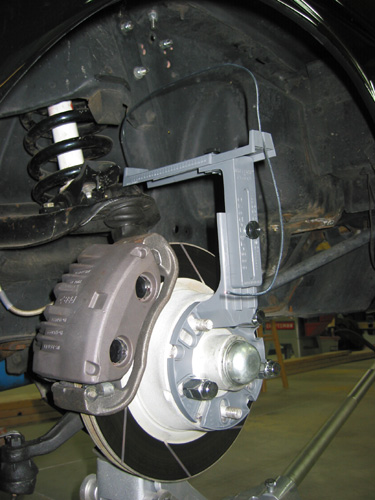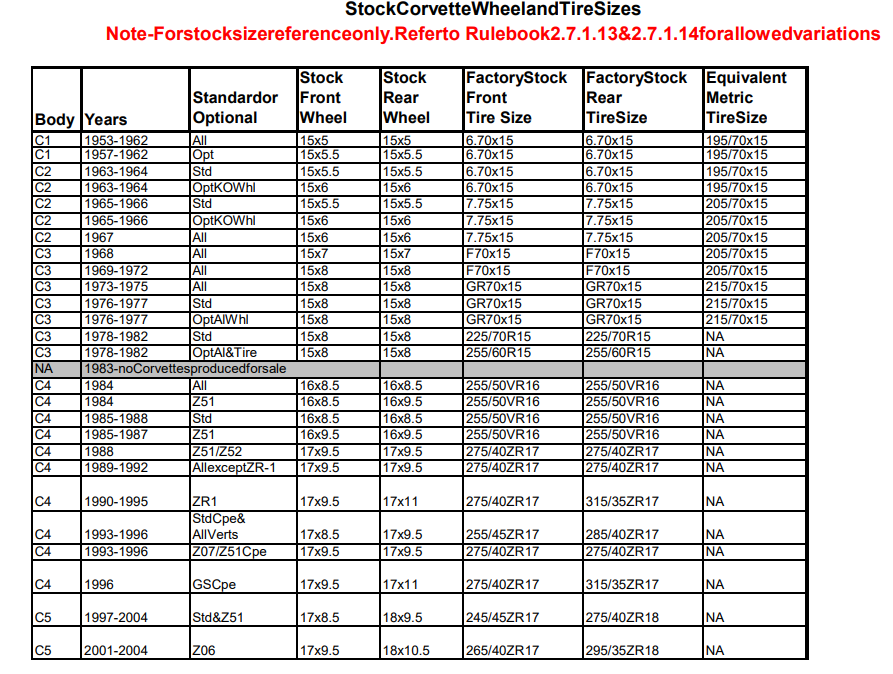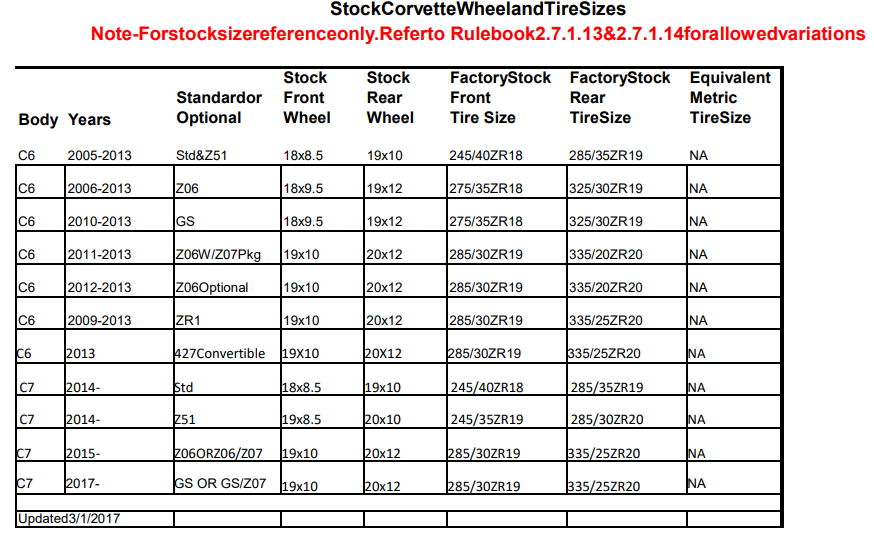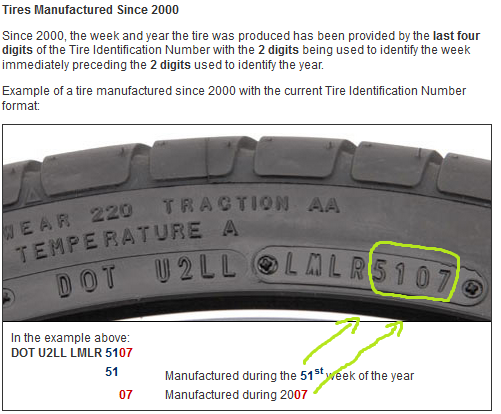
interesting tire comparator
http://www.discounttire.com/dtcs/infoTireMath.dos
tire age vs safety
https://www.edmunds.com/car-maintenance/how-old-and-dangerous-are-your-tires.html
https://www.consumerreports.org/tires/when-to-replace-your-tires/
https://www.merchantsgroup.com/10-tips-tire-safety-1/
https://www.autoblog.com/2014/01/29/replacing-your-tires/
http://tire-size-conversion.com/tire-height-calculator/
http://edis.ifas.ufl.edu/HE727
http://abcnews.go.com/Video/playerIndex?id=4826897
http://www.tirerack.com/tires/tiretech/ ... p?techid=7
http://www.tirerack.com/tires/tiretech/ ... ?techid=11
http://www.tiresizecalculator.info/
viewtopic.php?f=71&t=1071&p=2055#p2055
http://www.pozziracing.com/12_corvette_ ... n_fgen.htm
http://www.harriger.com/tires.htm
http://www.nhtsa.gov/cars/rules/manufacture/index.html
http://home.netcom.com/~sgalaba/tiresize.htm
http://www.tirerack.com/tires/tiretech/ ... ?techid=53
http://www.carcraft.com/techarticles/3636/
http://www.high-impact.net/wheels/backspacingillustration.htm
http://www.custom-wheels-n-rims.com/WheelTech/wheel-backspace.htm
http://www.rsracing.com/tech-wheel.html#backspace
http://www.kormanfastbmw.com/ttiredia.htm
http://www.rsracing.com/rscatalog/prod-index.asp
http://www.rsracing.com/glossary.htm#patch
http://www.miata.net/garage/tirecalc.html
http://www.geocities.com/steve.knickerbocker/tires/tirediam.htm
https://www.tirerack.com/tires/tire...0920365!b!!g!!+tire +load +index&gclsrc=aw.ds
http://www.yournexttire.com/load-speed-ratings/
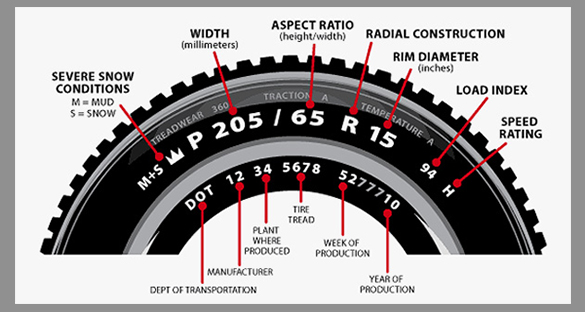
Load Index - The weight a tire is rated at. Multiply number x 4 for total vehicle.
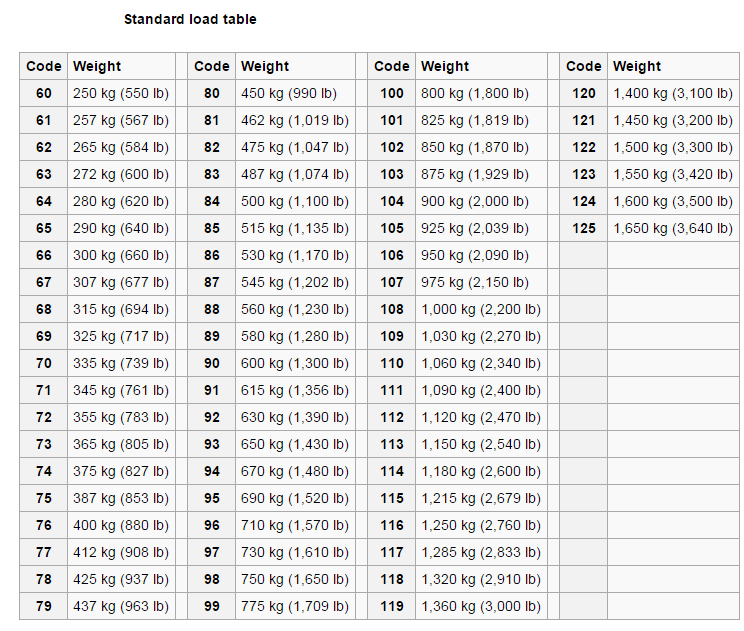
Ply Ratings – P.R. or Ply Ratings on tires are now used in comparison for what used to be termed as plies.
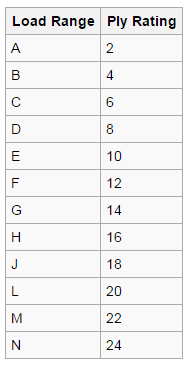
Speed Ratings – It indicates the maximum speed at which the tire can carry a load corresponding to its Load Index.

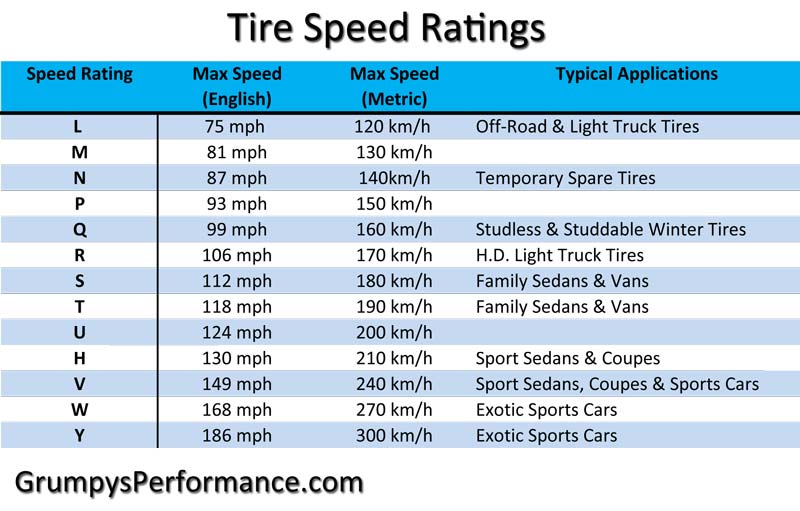

Tire Diameter Page
Tire
designator Tire
diameter Tire
designator Tire
diameter Tire
designator Tire
diameter
P155/80R13 22.76 B60-14 21.74 H60-14 24.26
P165/60R15 22.80 B60-15 22.74 H60-15 25.26
P165/70R13 22.09 B70-14 23.03 H70-14 25.97
P165/80R13 23.39 B70-15 24.03 H70-15 26.97
P175/70R13 22.65 B78-14 24.06 H78-14 27.34
P175/80R13 24.02 B78-15 25.06 H78-15 28.34
P185/70R13 23.20 C60-14 22.34 J60-14 24.50
P185/70R14 24.20 C60-15 23.34 J70-14 26.25
P185/75R14 24.93 C70-14 23.73 J78-14 27.65
P185/80R13 24.65 C70-15 24.73 L60-14 24.68
P195/60R14 23.21 C78-14 24.84 L60-15 25.68
P195/60R15 24.21 C78-15 25.84 L70-14 26.46
P195/70R13 23.75 D60-14 22.58 L78-14 27.88
P195/70R14 24.75 D60-15 23.58 M60-14 25.22
P195/75R14 25.52 D70-14 24.01 M60-15 26.22
P205/60R13 22.69 D70-15 25.01 M70-14 27.09
P205/70R14 25.30 D78-14 25.15 M70-15 28.09
P205/75R14 26.11 D78-15 26.15 M78-14 28.59
P205/75R15 27.11 E60-14 22.82 M78-15 29.59
P215/60R14 24.16 E60-15 23.82 N60-14 25.76
P215/65R15 26.00 E70-14 24.29 N60-15 26.76
P215/70R14 25.85 E70-15 25.29 N70-14 27.72
P215/75R14 26.70 E78-14 25.47 N70-15 28.72
P215/75R15 27.70 E78-15 26.47 N78-14 29.29
P225/60R15 25.63 F60-14 23.24 N78-15 30.29
P225/70R14 26.40 F60-15 24.24
P225/70R15 27.40 F70-14 24.78
P225/75R15 28.29 F70-15 25.78
P235/60R14 25.10 F78-14 26.01
P235/60R15 26.10 F78-15 27.01
P235/70R15 27.40 G60-14 23.78
P235/75R15 28.88 G60-15 24.78
P245/50R16 25.65 G70-14 25.41
P245/60R14 25.57 G70-15 26.41
P245/60R15 26.57 G78-14 26.71
P255/50R16 26.04 G78-15 27.71
P255/60R15 27.05
P255/70R15 29.06
P275/60R15 27.98
http://www.dougrippie.com/drm/brake_conversions.htm#C4 Corvette DRM Wilwood Brake Kit
ll four tires on a vehicle should be the same size and type. Select the type and quality tires needed for the intended use of the vehicle. How fast do you drive, what type of loads do you carry, what about breaking/stopping quality and how many miles do you want your tires to last? Information printed on the sidewall and label of tires can help you compare different brands and types of tires. This information includes:
*
Tire size – written as a series of letters and numbers, example P195/70R14 90S. The 195 is the cross-section measurement of the tire in millimeters and 70 is the height of the tires sidewall compared to the tires width. The sidewall is 70% as high as the tire is wide.
*
Type of tire – in the P195/70R14 example P stands for passenger car tire. If the tire was for a light truck such as a pick-up it would be LT instead of P.
*
Construction - in the P195/70RI4 R stands for radial ply tire. Most tires are radials.
*
Wheel size – in the P195/70R14 example 14 is the diameter of the wheel in inches. If it were a 12-inch wheel the number would be P195/70R12.
*
Load range – in the 9195/70R14 90S example 90 is the code for the maximum load or weight the wheel will carry safely (1312 pounds). Notice this information is also repeated on the sidewall, “max load 595 kg (1312 pounds). Different numbers are used to identify different load ranges.
*
Speed rating – in the P195/R14 90S example S identifies the maximum number of miles per hour the traveler can travel safely. S stands for 112 miles per hour. Other ratings are: T = 118 mph; H = 130, V = 149, and ZR = 150 or more.
*
Maximum air pressure – (taken when cold) stated as pounds per square inch (PSI). The air pressure should not exceed the number of PSI listed on the sidewall of the tire, example 35 PSI. For general driving you should use the air pressure recommended in your cars operator manual or on the sticker on the door jam or the glove compartment.
*
Traction – is a rating score for government required tests on wet pavement . Traction is the stopping and holding capabilities of the tires. Ratings range from C to AA. Look for at least an A in traction.
*
Temperature – is also a government required rating score for heat buildup inside a tire. This is especially important when a tire is under-inflated or carrying a heavy load. Heat destroys tires and can cause blow-outs. Look for at least a B in temperature rating.
*
Treadwear – relates to how quickly the tread wears on a tire and how many miles the tire will last. This is expressed as a number. The minimum standard is 100. The higher the number the longer the tread will last. A tire with a 400 rating will last much longer than the tire with a 200 rating.
*
DOT – stands for Department of Transportation. This code identifies the plant and date including week and year that the tire was manufactured. This code is used if a tire is recalled.
Using a P195/60R15 87S tire size as our example, the 87S at the end of the size represents the tire's service description. A service description identifies the tire's load index and speed rating. Service descriptions are required on all speed rated (except for Z-speed rated) tires manufactured since 1991.
The first two digits (87S) represent the tire's load index and are followed by a single letter (87S) identifying the tire's speed rating.
"Using a P195/60R15 87S tire size as our example, the 87S at the end of the size represents the tire's service description. A service description identifies the tire's load index and speed rating."
Load Index
P195/60R15 87S - The load index (87) is the tire size's assigned numerical value used to compare relative load carrying capabilities. In the case of our example, the 87 identifies the tire's ability to carry approximately 1,201 pounds.
The higher the tire's load index number, the greater its load carrying capacity.
89 = 1,279 pounds
88 = 1,235 pounds
87 = 1,201 pounds
86 = 1,168 pounds
85 = 1,135 pounds
A tire with a higher load index than that of the Original Equipment tire indicates an increase in load capacity. A tire with a load index equal to that of the Original Equipment tire indicates an equivalent load capacity. A tire with a lower load index than the Original Equipment tire indicates the tire does not equal the load capacity of the original.
Typically, the load indexes of the tires used on passenger cars and light trucks range from 70 to 126.
Load Index Pounds Kilograms Load Index Pounds Kilograms Load Index Pounds Kilograms
70 739 335 89 1,279 580 108 2,205 1,000
71 761 345 90 1,323 600 109 2,271 1,030
72 783 355 91 1,356 615 110 2,337 1,060
73 805 365 92 1,389 630 111 2,403 1,090
74 827 375 93 1,433 650 112 2,469 1,120
75 853 387 94 1,477 670 113 2,535 1,150
76 882 400 95 1,521 690 114 2,601 1,180
77 908 412 96 1,565 710 115 2,679 1,215
78 937 425 97 1,609 730 116 2,756 1,250
79 963 437 98 1,653 750 117 2,833 1,285
80 992 450 99 1,709 775 118 2,910 1,320
81 1,019 462 100 1,764 800 119 2,998 1,360
82 1,047 475 101 1,819 825 120 3,086 1,400
83 1,074 487 102 1,874 850 121 3,197 1,450
84 1,102 500 103 1,929 875 122 3,307 1,500
85 1,135 515 104 1,984 900 123 3,417 1,550
86 1,168 530 105 2,039 925 124 3,527 1,600
87 1,201 545 106 2,094 950 125 3,638 1,650
88 1,235 560 107 2,149 975 126 3,748 1,700
Calculating Approximate Tire Dimensions
SERVIC
Last edited by a moderator:

